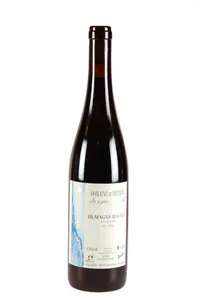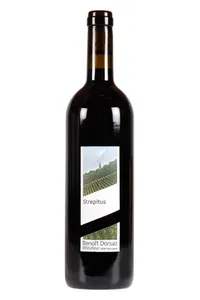Free delivery from Fr. 300 of purchase or 18 bottles, otherwise Fr. 15

Valais
With 4,700 hectares of vineyards, the Valais remains the most important Swiss wine-growing canton, accounting for 33% of the surface area. Production is currently divided as follows: 61% white and 39% red. In terms of grape varieties, the Valais is also undergoing a transformation: pinot noir, gamay and chasselas are in sharp decline (especially for the last two), while petite arvine, savagnin, cornalin, syrah, red humagne and merlot have made significant inroads over the last thirty years. As is the case in many other cantons, the vineyard area in the Valais is slowly being eroded. In thirty years, the Valais vineyard (from 1991 to 2000) has lost more than 500 ha of vines. Let's not forget that if Valais has a little more than 400 wine producers, 22,000 Valaisans own 80,000 plots of land spread over the 65 wine-producing communes of the canton. A whole generation of "Sunday winegrowers" has largely reached retirement age and the new generations are sometimes struggling to take over, especially for the vines on the slopes, which are more demanding to work. This is the first explanation. The second is linked to the difficulty of adding value to the grapes, in connection with the difficulties of Provins, which recently passed into the hands of Fenaco and which intends to regain the market shares lost in the "first price" segment. In other words, the circle has been squared. And yet, the potential for top-of-the-range wines is there with a high percentage of old vines: nearly a quarter of the Valais vines are 40 years old or more and 8% are over 50 years old. Not to mention a favourable climate and an impressive geological mosaic. From the steep slopes of Visperterminen to Vouvry, the Valais wine region is characterised by an exceptional variety of exposures and terroirs. Indeed, there are rather chalky soils in the region of Sierre in particular and in the central Valais. From St-Léonard onwards, following the course of the Rhône, these soils are mixed with gypsum, quartz and schist. These schists are found in the Sion and Vétroz region, with alluvial zones at the bottom of the slopes. Chamoson benefits from diversified terroirs ranging from alluvial soils to more schistous areas. The vineyards of Leytron and especially Saillon are located on very gravelly alluvial cones. With the exception of the Ardève area which is the hard core of the Dent de Morcles fold-nappe (schistose limestone of the Lias and Aalenian).
The Fully vineyard also presents a unique situation in the Valais as it lies at the crossroads of two geological formations. One is an extension of the Chamonix granite massif with gneiss, and the other is from the Bernese Alpine relief. A great diversity of soils and subsoils for a myriad of plots scattered on often steep hillsides, this is the Valais vineyard which also constitutes a sort of living conservatory of very old varieties such as amigne, petite arvine, white humagne, traminer (pagan) or the confidential lafnetscha, himbertscha for the whites, red humagne and cornalin for the red wines. At the same time, the Valais vineyards are in a way the living laboratory of the future and many grape varieties have acclimatised remarkably well. First and foremost are the great Rhodanian grape varieties (Syrah and Marsanne): the Valais can indeed be considered as the first Rhodanian vineyard. In all, more than 60 different grape varieties are grown in this land with its hot, dry climate (between 500 and 700 mm of water per year, depending on the region), even though the "Valais" appellation d'origine contrôlée is only awarded to 48 grape varieties.
If you would like to enjoy other Swiss wines, we invite you to discover the wines of Ticino, Aargau, Vaud, Neuchâtel and Thurgau.
79 items
Syrah, Chamaray Antica, Domaine Cornulus - 2014
Valais
Grain Noir, M.-Th. Chappaz - 2012
Valais
Syrah, Chamaray Antica, Cornulus - 2016
Valais
Gamay Vieilles Vignes, Valentina Andrei - 2015
Valais
Grain Noir, M.-Th. Chappaz (magnum) - 2012
Valais

Cornalin, Domaine de Beudon - 2019
Valais

Humagne rouge Vieilles Vignes, Domaine de Beudon - 2019
Valais

Astrance, Maurice Zufferey & Jacques Perrin - 2019
Valais

Tout ce qui flotte dans l'air..., Maurice Zufferey & Jacques Perrin - 2019
Valais

Strepitus rouge, Benoît Dorsaz - 2022
Valais

Pinot Noir La Part des Anges, Claudy Clavien - 2021
Valais

Humagne rouge, Claudy Clavien - 2022
Valais